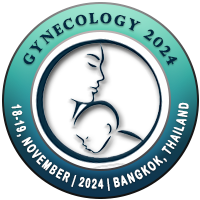
Sharief M Hameed
University of Basrah, IraqTitle: Effect of Serum Level of Human Epididymis Protein 4 and Interleukin-6 as Biomarkers in Patients with Adnexal Mass
Abstract
Adnexal masses are classified as simple or complicated and can be benign or malignant. The aim was to investigate the influence of using two biomarkers for diagnosis in patients with an adnexal mass. Female patients diagnosed by ultrasound and magnetic resonance imaging with adnexal masses and scheduled for surgery and healthy women as a control group (n=50 each). The patients were in the age range of 16-80 years old and had attended the surgical rooms of Basrah hospitals, Basrah, Iraq, from January to July 2021. The levels of serum biomarkers were quantitatively assessed by ELIZA. The serum concentration of the human epididymis protein 4 (HE4) biomarker exhibited significant differences between females with adnexal mass and healthy women. There was no significant association between neither the patient’s age nor the menopausal state and the serum level of HE4. The serum level of HE4 had a sensitivity of 92% and a specificity of 66% as a serum marker for the presence of adnexal mass with a positive predictive value of 73% and a negative predictive value of 89%. In this study, serum interleukin-6 (IL-6) had a sensitivity of 30% and specificity of 64% in determining patients with adnexal mass pathology. It was found that the level of IL-6 was similar in all patients, compared to that in the control group. The median levels of serum HE4 showed high value in patients in the age groups of 21-40, 41-50, and >50 than in the control group; however, it was not statistically different (P=0.413). Human epididymis protein 4 was the top biomarker representing a higher concentration in adnexal mass; moreover. The results of our study showed that combining more than one marker measurement increased both the sensitivity and specificity of distinguishing patients with adnexal mass pathology.
Biography
To be updated

